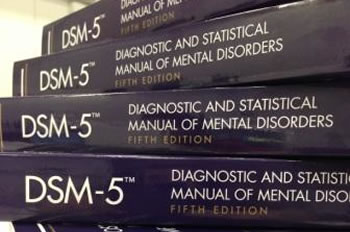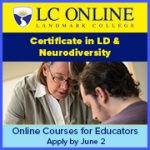
September 2013
The “Diagnostic and Statistical Manual” or DSM is a manual for use by physicians as well as other health and mental health professionals. Its purpose is to provide clear descriptions of diagnostic categories in order to enable medical clinicians and investigators to diagnose, communicate, study, and treat people with specific disorders. With each revision of this manual, new knowledge has permitted the diagnostic criteria to become more specific; thus, enabling further clarity of the disorder. The American Psychiatric Association (APA), in collaboration with other mental health organizations, updates the criteria for mental disorders, which includes Learning Disorders, Motor Skills Disorders, and Communications Disorders.
Background
The effort for clarity of diagnostic criteria for medical disorders started with the World Health Organization (WHO). This organization publishes a manual, “The International Classifications of Diseases” (ICD), listing specific diagnostic criteria for all medical illnesses, including mental disorders. Thus, there is a uniformity of criteria used around the world. Each member country publishes its own diagnostic manual based on this international manual. Countries may modify the ICD but cannot change the intent of the ICD diagnoses. Each time the WHO publishes an update of the ICD, each country updates their diagnostic manual to be compatible with the new ICD.
In the United States the American Medical Association is responsible for updating the diagnostic criteria used in the USA based on the revised ICD. Each medical specialty organization updates the diagnostic criteria for their specific specialty. The American Psychiatric Association (APA), in collaboration with other mental health organizations, updates the criteria for mental disorders. These updates are published as, “The Diagnostic and Statistical Manuel of Mental Disorders” or DSM. Thus, when ICD-10 was released, the APA updated their DSM-IV and published DSM 5.
Learning problems addressed
In 1980, with the third edition of the DSM (DSM-III), the issue of problems with learning was first addressed. These disorders were called, “Academic Skills Disorders.” In 1994, the DSM-IV changed the name to “Learning Disorders.” The term, Learning Disorders, is used in DSM-5.
Starting with DSM-III, motor and language difficulties were also addressed. Thus, under “Motor Skills Disorders” there is a category for “fine motor/handwriting difficulties” and under “Communications Disorders” there are categories for Receptive Language and for Expressive Language Disorders.
Specific learning disorders defined
Specific Learning Disorders is defined as, “Learning disorders interfering with the acquisition and use of one or more of the following academic skills: oral language, reading, written language, mathematics. These disorders affect individuals who otherwise demonstrate at least average abilities essential for thinking or reasoning. As such, Learning Disorders are distinct from Intellectual Developmental Disorders.” This definition of Learning Disorders goes on to state, “… the diagnostic criteria do not depend upon comparisons with overall IQ and are consistent with the changes in the USA’s reauthorized IDEA regulations (2004) which state that, “the criteria adopted by each State must not require the use of a severe discrepancy between intellectual ability and achievement for determining whether a child has a specific learning disability.”
DSM’s impact on parents and educators
Remember, the DSM, including the new DSM 5, does not impact on parents or educators. It is a medical document to be used by health and mental health professionals to assist them in making the correct clinical diagnosis. Educators and parents continue to use IDEA and it’s revisions. Parents have asked me why the DSM cannot use the same term as in the education Laws, Learning Disabilities. The answer is that the DSM is a medical diagnostic manual. Medical conditions are not called disabilities (e.g., a thyroid disability). Medical conditions are called disorders (e.g., a thyroid disorder); thus, “learning disorders.” When I speak to parents I remind them, “Isn’t it wonderful that the medical world recognizes the existence of neurologically-based learning problems. Don’t get upset if they call these problems a learning disorder rather than a learning disability.”
Author: Larry B. Silver, M.D.


